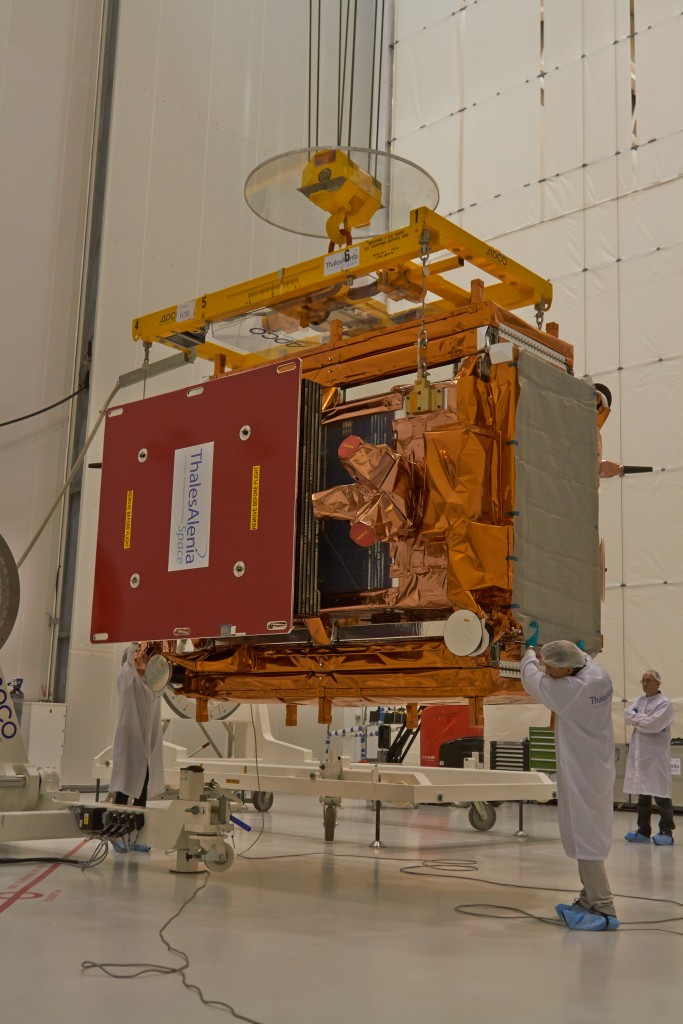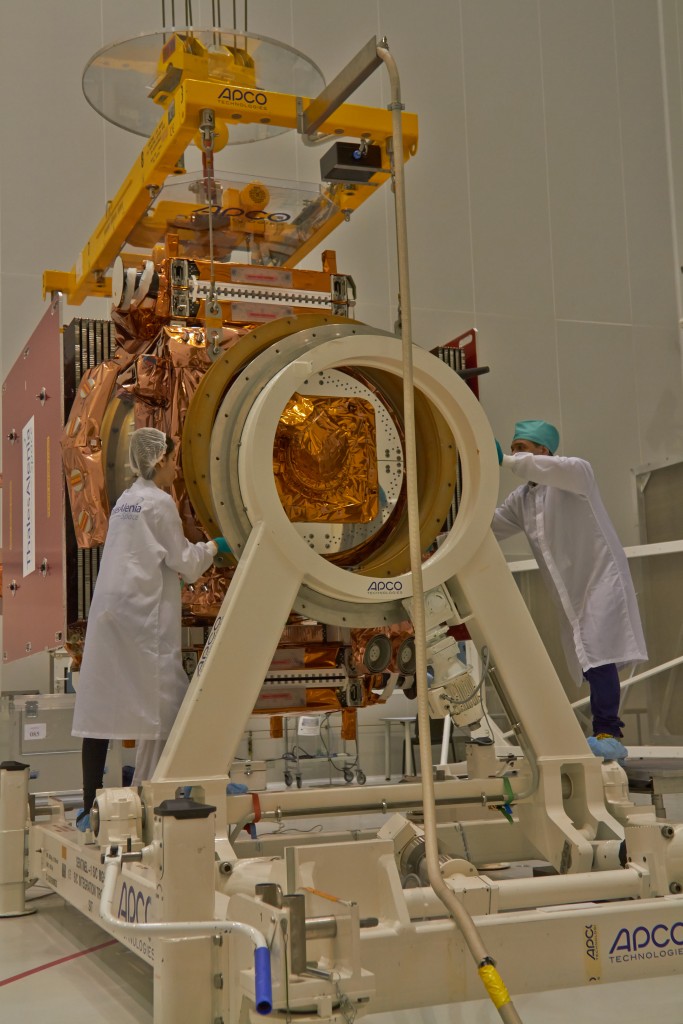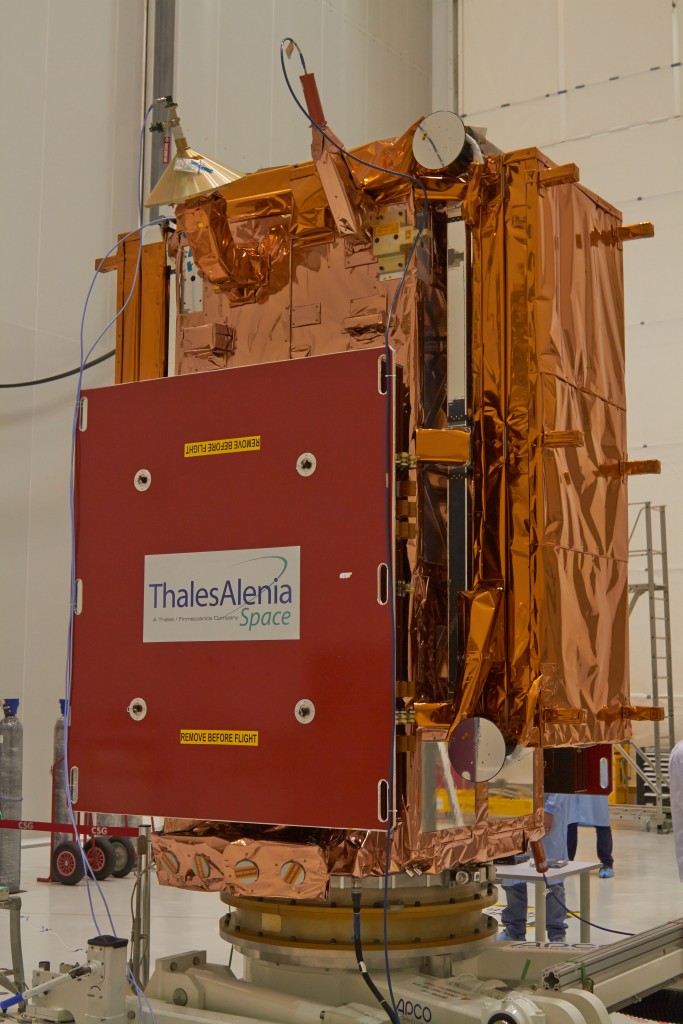Now that we have the Sentinel-1B safely in the ‘high bay’ at Europe’s Spaceport near Kourou in French Guiana, or Centre Spatial Guyanais, CGS, as it’s known locally, the campaign to prepare the satellite for liftoff on 22 April has started in earnest.

Positioning Sentinel-1B on the tilting trolley. (ESA)
On Friday, one of the first jobs was to position the satellite on the tilting table in preparation for testing. We also unpacked and set up the electrical ground support equipment in the ‘checkout room’.
Some team members from ESA and Thales Alenia Space went to the launch pad and to the ‘S3B’ building in preparation to validate communication links.
The satellite is currently in the S5C building. The launch pad and the S3B building, where the satellite will be fuelled and mated with the launcher’s Fregat upper stage and encapsulated in the fairing, are actually a few kilometres away.

Tilting table will hold Sentinel-1B during testing. (ESA)
It is therefore important to make sure that communication links between these locations work to make sure the satellite can be commanded from the electrical ground support equipment, which will remain in S5C.
Then we switched the satellite on – the first time since its arrival. Once switched on, we could do the ‘power consumption’ test, which went fine and paved the way for the propulsion test on Saturday.
In parallel, we confirmed that the voice communication system was working. The team at ESA’s European Space Operations Centre, ESOC, in Germany were naturally also involved in this test.

Ready for testing. (ESA)
Saturday went equally well and we are very pleased that we finished a series of tests focusing on the power sub-system, the GPS receiver and the propulsion sub-system. We got all this done in one day as well and the time-consuming process of pressurising and depressurising the satellite’s tank.
For information about our Sentinel-1 mission visit www.esa.int/sentinel-1
From the ESA Sentinel-1B team in Kourou.

Discussion: no comments